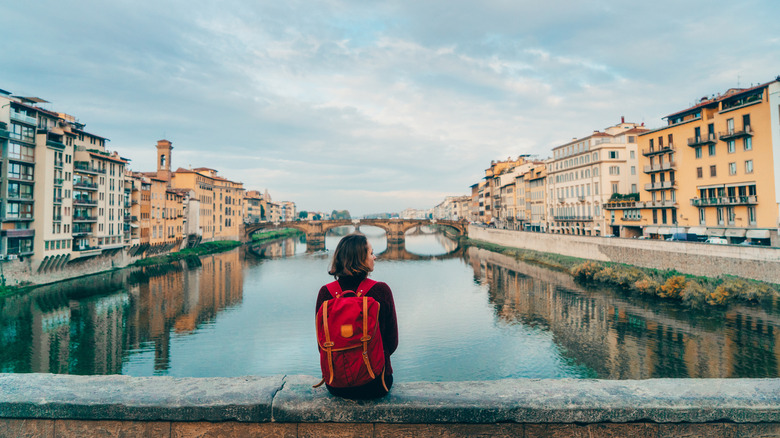Florence is one of the most visited cities in Italy, attracting millions of tourists a year. For many of us who visit Florence, we fall in lifelong love with it. It’s easy to understand why. Brimming with beautiful architecture, world-famous museums and churches, stunning vistas, and so much more, Florence is an unforgettable destination. With origins dating back to Ancient Roman times, the city grew to become a cultural center that influenced the world during the late Middle Ages and Renaissance. It’s astonishing how many artists, architects, and writers lived and worked here. Many of their masterpieces are still in Florence, and seeing them in person is well worth it.
Florence is a fairly small city, but it’s absolutely packed with things to do, see, eat, drink, and discover. It’s the kind of place that can be visited in a few days but still offers plenty of things to do over weeks or months, as those of us who love it and visit often can attest. Whether you’re planning a trip in high season (mid-May through September) or in the less crowded (and thus more enjoyable) period from October through April, these are just a few of the must-visit spots in Florence.
Ponte Vecchio
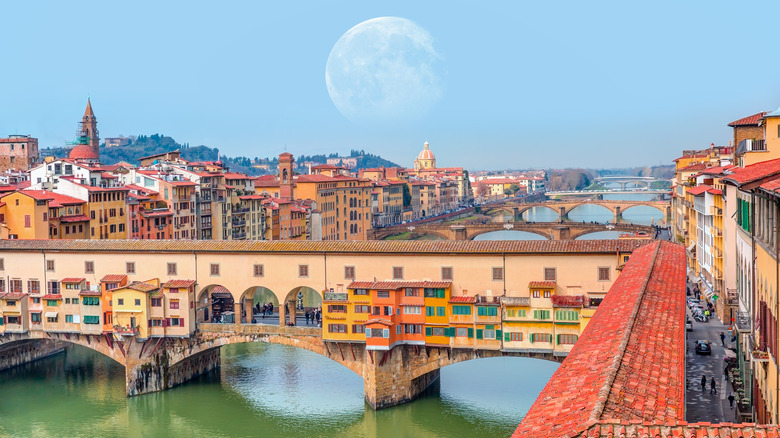
Completed in 1345, the Ponte Vecchio is one of the world’s most famous bridges. Once lined with butcher shops, by the 16th century, the bridge also provided a way for members of the Medici, the city’s ruling family, to cross the Arno River without having to deal with the crowds, thanks to the Vasari Corridor. The closed, second-story passage runs the length of the entire bridge and connects the Palazzo Vecchio (town hall) in the heart of Florence with the Palazzo Pitti on the Oltrarno, the Arno’s opposite bank.
Today, the butchers and nobles are long gone, and most of the Ponte Vecchio’s shops sell expensive jewelry. But that has little to do with what makes the “Old Bridge” special. It has so much charm and beauty that it was spared from demolition in World War II, and from an architectural point of view, it’s one of only four remaining bridges in Europe that still have buildings on it.
If that’s not enough to convince you to brave the crowds it draws, the open archways in its center should be. They frame magnificent views of the Arno and the stunning buildings along its banks and beyond. Be sure to take in views of Ponte Vecchio itself, especially from the upper windows of the Uffizi or from the two nearby bridges, Ponte Santa Trinità and Ponte alle Grazie.
The Duomo (Santa Maria del Fiore)
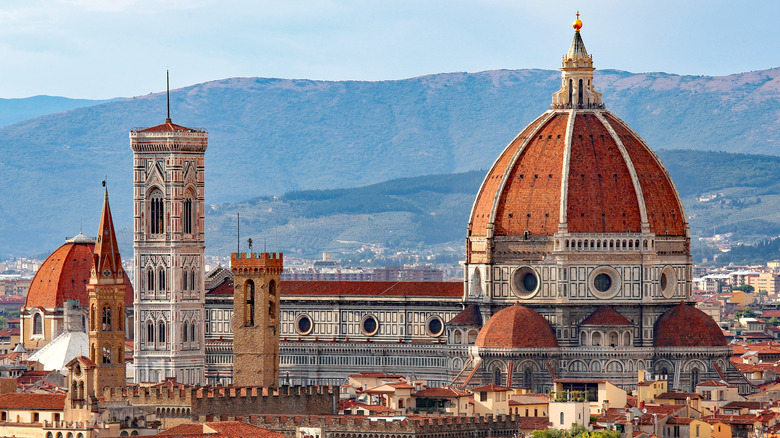
Officially called Santa Maria del Fiore (Saint Mary of the Flower), Florence Cathedral is commonly referred to as il Duomo (the cathedral). It’s especially famous for its dome, which was considered impossible to build at the time of its construction. However, in 1418, Renaissance architect Brunelleschi astonished everyone by finding a solution. Today, his dome dominates Florence’s skyline and is still the largest masonry dome in the world. The dome’s warm-red bricks offer a contrast to the rest of the cathedral’s colorful, candy-like marble façade, which was added centuries later.
Inside, the dome is decorated with a breathtaking fresco, “The Last Judgment” by Giorgio Vasari and Federico Zuccari, and you can get a little closer to Heaven by climbing the dome. To do so, you can purchase tickets through the official website of the Florence Cathedral, or consider taking a private tour of Florence’s Duomo, which allows you to skip long lines.
Beside the Duomo is Giotto’s Bell Tower, named for the famous Renaissance painter and overseer of the cathedral’s construction, and you’ll find the Baptistery of San Giovanni in front of the Duomo. In addition to its beautiful mosaic ceiling, the Baptistery is famous for the bronze bas-relief sculptures at the eastern entrance. Known as “The Gates of Paradise,” the sculptures were created by Ghiberti from 1425 to 1452 and have influenced countless artists since. Climbing the bell tower and visiting the inside of the Baptistery are included in some official Duomo pass options.
The Uffizi Gallery
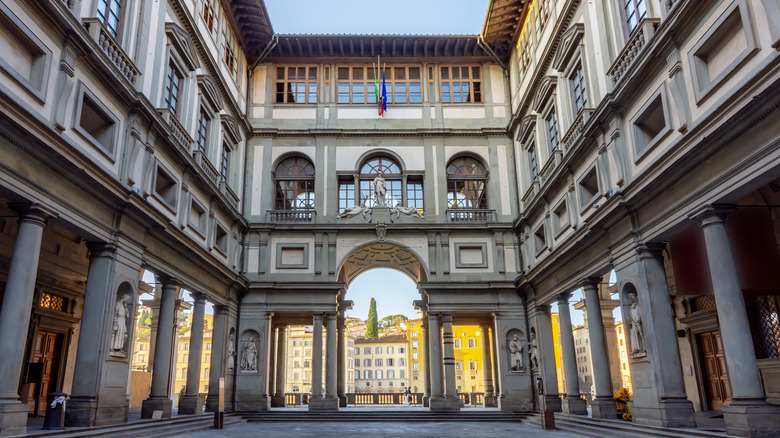
Vladislav Zolotov/Getty Images
The Uffizi Gallery regularly ranks among the 20 most-visited museums in the world, welcoming an average of over 2 million visitors per year. Of course, it’s easy to be a draw when you have world-renowned artistic masterpieces in your permanent collection. Among the thousands of works on display, you can see Botticelli’s “Birth of Venus” and “La Primavera”, “The Venus of Urbino” by Titian, “The Holy Family (Doni Tondo)” by Michelangelo, “The Annunciation” by Leonardo da Vinci, “Judith Beheading Holofernes” by Artemisia Gentileschi, and many more, including works by Raphael, Dürer, and Caravaggio.
The building that houses the museum is a work of art unto itself. Designed by Vasari and built between 1560 and 1580, the massive complex was first used by the Medici family as administrative offices (hence the museum’s name, which translates to Gallery of the Offices). Its courtyard and other features are considered masterpieces of Renaissance architecture. Unfortunately, the Uffizi is also known for something less positive — wait times to get in, especially during high season. Although it’s possible to buy tickets at the museum itself, purchasing them in advance is almost a requirement, especially if your time is limited in Florence.
Galleria dell’Accademia
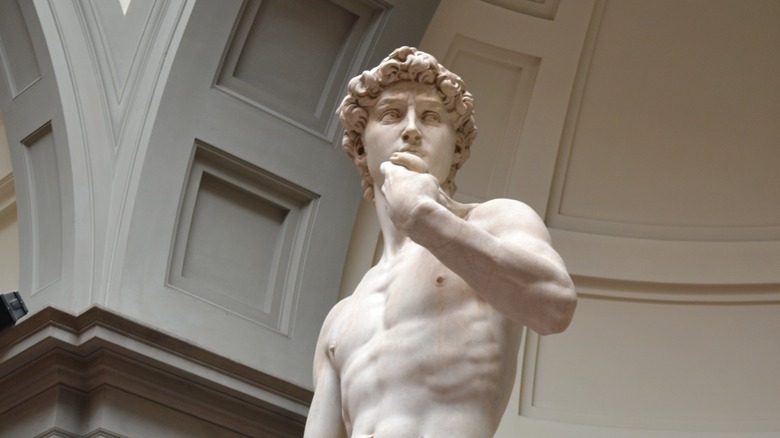
Nina Hartwood/Shutterstock
Michelangelo’s “David” is one of the world’s most famous works of art. Seeing “David” in person — not the copy in the Piazza della Signoria (its proportions seem wonky) — will make you truly understand why the statue is considered one of the greatest sculptures in history. Carved of flawless white marble, it towers over you — magnificently. Look closely to appreciate details like the veins in David’s hands, a reminder that artists like Michelangelo often studied corpses (an illegal practice at the time) to bring realism to their works. Be sure to view “David” from all sides; from the back, he’s equally impressive (and some say quite attractive).
The Galleria dell’Accademia isn’t just home to this famed statue, though. The museum boasts an impressive permanent collection, including works by Renaissance masters. Four of Michelangelo’s “Slaves” can also be viewed here. These largely unfinished sculptures make up a striking display, lining the corridor that leads to “David,” as if to show the struggle of the artist to create perfection, or the struggle we all experience to be our best selves. You can buy Galleria dell’Accademia tickets onsite, but if you do, you’ll probably face long wait times. The museum itself advises guests to preorder them online or by phone.
La Fontana del Porcellino and Mercato Nuovo
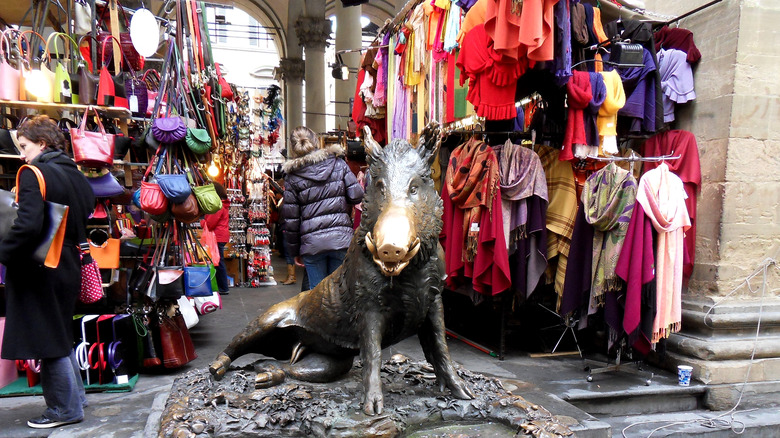
Nellaccio/Getty Images
One of the oldest markets in the world, Mercato del Porcellino was established in the mid-16th century and is covered by a stone loggia that dates to that time. The “new” in Mercato Nuovo comes from the fact that it was the newer of two outdoor markets in the city. Today, it’s primarily a place to buy leather goods and souvenirs. You can haggle, although many vendors won’t budge. In the center of the market is the “stone of scandal,” where debtors were flogged on their bare backsides. A good reminder not to overspend.
If you wish to revisit Florence, it’s a good idea to head to the Fontana del Porcellino (Piglet Fountain), found on one end of the Mercato Nuovo. Placed in the market since around 1640, the Porcellino Fountain features a bronze copy of an ancient Roman statue of a boar, iI Porcellino. The statue isn’t necessarily a draw unto itself. It’s fairly small and easily lost in the busy, crowded market, and dwarfed by the magnificent buildings around it. However, it’s said that if you want to return to Florence one day, rub the boar’s snout for good luck and place a coin in his mouth. This coin will fall into the grates below and hopefully grant your wish for another visit. Harry Potter fans may want to visit iI Porcellino for an additional reason: the statue is featured in some of the films (at Hogwarts, of course).
La Specola
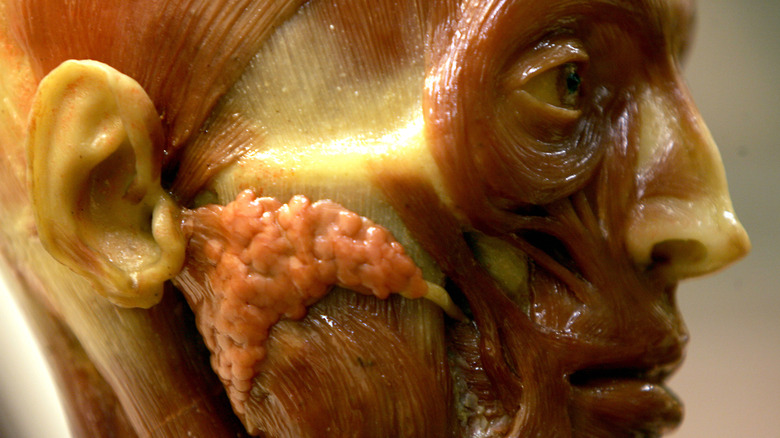
Alessandra Benedetti – Corbis/Getty Images
If a “must visit” for you includes the offbeat and macabre, Florence offers the perfect place. La Specola is the city’s smallish, charming natural history museum. One of its floors houses the largest anatomical waxworks collection in the world, featuring 1,400 realistic-looking wax models of body parts, organs, and signs of disease. There are also full body figures, including a few anatomical Venuses, idealized beautiful, sensual women whose torsos could be opened to reveal realistic-looking organs and a fetus inside. La Specola’s extremely realistic-looking models were made in the late 1700s and early 1800s, copied from real-life specimens from living or dead subjects. However, the hair is real human hair, often taken from corpses.
Despite their somewhat creepy nature, the anatomical waxworks are treated with great respect. They are considered both works of art and were helpful resources for scientific and medical research. Displays are organized and academic, and visiting hours are limited. Since the waxworks are so sensitive, too much vibration from visitors walking on the floors can damage them. Because of this, be sure to check the museum’s official website for admission rules and times. As of this writing, La Specola is closed for renovations but is due to reopen in February 2024.
Piazzale Michelangelo and San Miniato al Monte
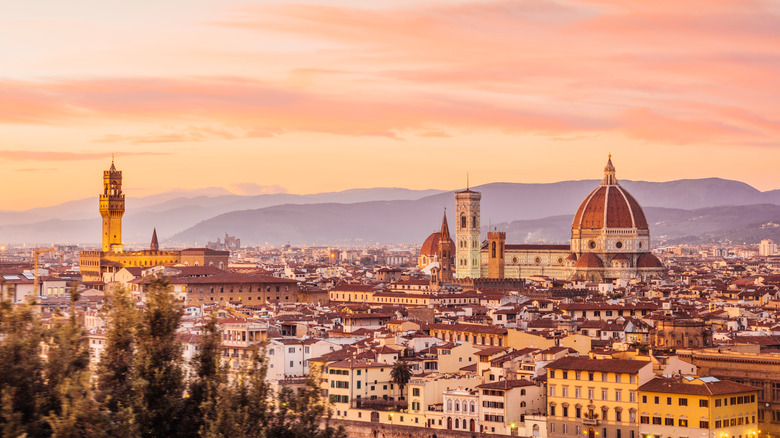
Filippobacci/Getty Images
Most of Florence is flat, making it easy to walk around. But two must-visit sites are a bit more complicated to reach. Located on a high hill above the city, the Piazzale Michelangelo isn’t particularly stunning unto itself; it’s essentially a paved square with a copy of Michelangelo’s “David” in the middle. But look out over the guardrails, and you’ll enjoy breathtaking, postcard-worthy, and panoramic views of Florence. The reds of its rooftops, the warm beiges and grays of its stone facades, and the blue-gray of the mountains beyond are gorgeous in any season.
If you’re willing to climb even further, the Romanesque basilica of San Miniato al Monte, built between 1018 and 1207, is home to some fascinating frescoes, the possible remains of its namesake (St. Miniatus), and a mystical atmosphere. Get here on a weekday at 6 p.m. to hear the resident monks’ service in Gregorian and Latin chants, which adds to the church’s unique ambiance.
You can reach the Piazzale Michelangelo via paved streets on foot, though it’s a bit of a tiring climb. You can also get here by taxi or a city bus from central Florence. From the Piazzale, you can climb steep steps to San Miniato al Monte or take a bus to get closer to the church. Through correspondence, a monk advised us that visitors who use wheelchairs should take a taxi to the front of the church, and once they arrive, ask a guard to escort them to an area with an access ramp.
Florentine gelaterias
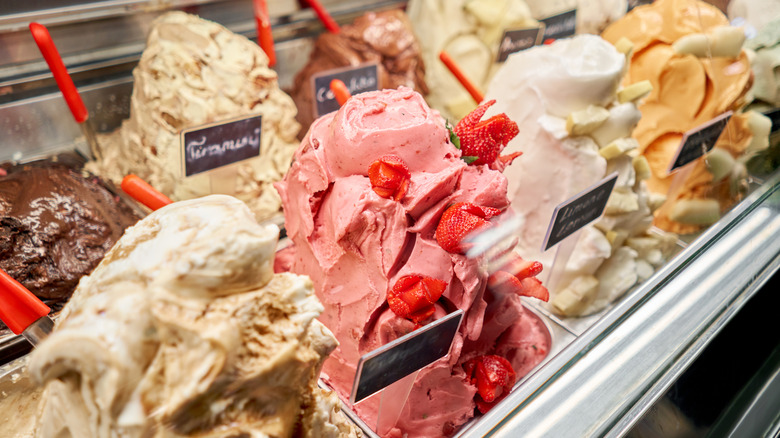
Fusionstudio/Shutterstock
Gelato is like ice cream on overdrive, with a richer flavor and a creamier texture. The delicious frozen treat was supposedly invented in Florence in the 16th century by Bernardo Buontalenti. Although some dispute this, one thing is certain: Gelato is ubiquitous in Florence today. You don’t have to walk far to find a gelateria (gelato shop), whether it’s a small hole in the wall or a large, even grandiose-looking parlor.
An online search for “best gelato” or “best gelateria” in Florence results in an abundance of different answers. However, two that often appear in lists and rankings are Gelateria Perchè No and classy, somewhat pricey La Carraria. But the truth is, no matter where you get it, gelato will probably taste good, especially if you’re visiting Florence in the stiflingly hot summer. Also, since Florence has so many places to get gelato, prices are competitive, making it an affordable treat to enjoy as you explore the city.
Palazzo Davanzati (Museum of the Old Florentine House)
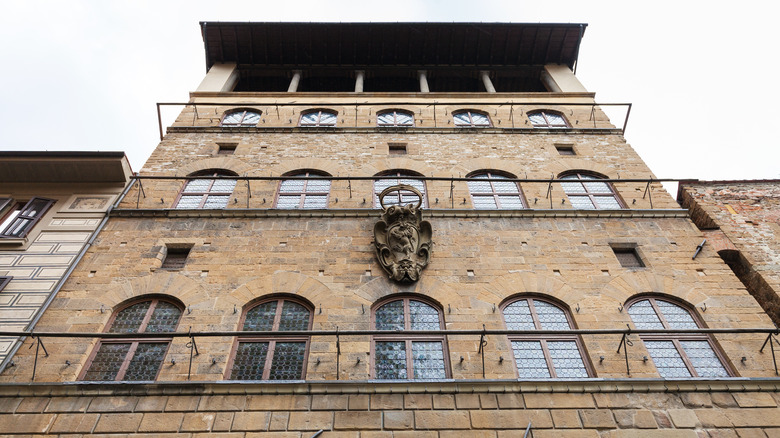
Vvoevale/Getty Images
Florence boasts countless museums and masterpieces that spotlight the people who ran the city or changed the history of art and culture forever. But what was it like for the (somewhat) average person who lived in Florence during its medieval heyday? The Palazzo Davanzati offers a fascinating answer to this question. A multi-story home for a wealthy merchant family, the Palazzo dates to the mid-14th century and was only owned by three families from then until 1838. Today, it’s been restored to showcase how an upper-class family may’ve lived in the late Middle Ages.
In addition to beautiful wall paintings, furniture, and artistic treasures, you’ll also get glimpses of the smaller details of medieval life. For instance, you’ll see how well water was hoisted from the courtyard to different floors. One of the biggest surprises may be the luxury feature of multiple bathrooms — small, private rooms where a person could take a bath or “do their business.” These aren’t something we often think of when we picture life in long-ago Florence. In a different way, it all makes for a portrait just as intriguing as something painted by a world-famous artist.
Piazza della Signoria
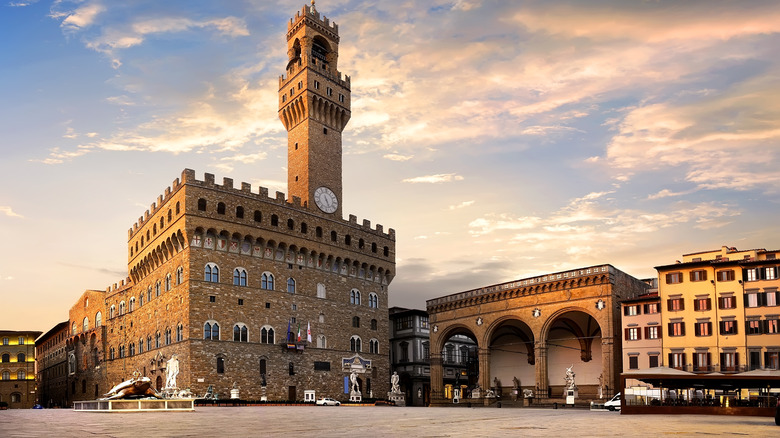
givaga/Shutterstock
Florence’s main square is a large, open space that can be brutally hot in the summer. Still, there’s much to love and see at the Piazza della Signoria. Most noticeable is the Palazzo Vecchio, the old town hall. Despite its high tower, the Palazzo Vecchio is often overshadowed by other museums and attractions, including the nearby Uffizi. But a visit here’s worth considering. You’ll see, among other things, lavishly decorated Renaissance-era rooms, as well as ruins from Florence’s Ancient Roman past in a section beneath the current Palazzo. Even if you don’t visit the museum, you’ll usually be able to step just inside the entrance, where you can admire a beautiful courtyard.
Just outside the Palazzo Vecchio, you can see a copy of Michelangelo’s “David.” The original (which looks a million times better) used to be located here. Not far from it, near the entry door and behind a statue of Hercules, you can see l’Importuno di Michelangelo, a graffiti-engraved head that’s said to have been drawn by Michelangelo himself to mock an annoying person talking to him. You’ll also see Loggia dei Lanzi, a small group of covered arches housing sculptures, some of which are originals dating to the 16th century. In summer, the Piazza della Signoria is probably best enjoyed at night, when the weather’s cooler, vendors display their wares, families let their kids scamper around, and street performers strike up songs.
Pizzeria O’Vesuvio
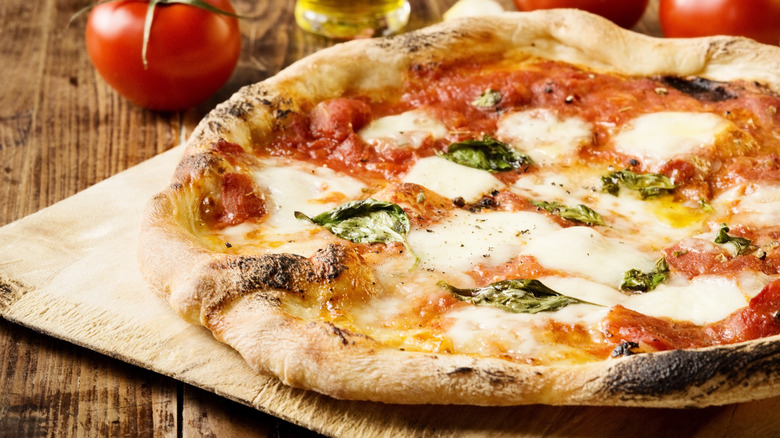
V. Matthiesen/Shutterstock
Florence isn’t known for its pizza; that honor goes to the city of Naples. Pizzeria O’Vesuvio may have initially been popular due to its central location (only a few minutes from the Duomo), as visitors simply stumbled upon it while exploring the city. However, after the “Jersey Shore” people worked here during the show’s Florence season, fans began intentionally searching it out. But, whatever may lead you to O’Vesuvio, you’ll be happy you walked through the doors and ordered a pizza. So, what’s such amazing, Neapolitan-style pizza doing in Florence?
The owner of Marco Spagnuolo comes from the area around Naples, and, as he writes on the pizzeria’s website, he was “in despair” about never having the kind of delicious pizza he knew and loved in Florence. So, he opened O’Vesuvio. Today, the pizzeria serves salads, calzones, and delicious pizza that’s kneaded, tossed, and cooked in front of customers. The clientele is a fascinating mix of tourists and locals alike. You’re just as likely to sit beside a group of tourists as a family having supper cheering on the local football (soccer) team. It’s a slice of real life in Florence, served with a delicious meal.
Basilica di San Lorenzo
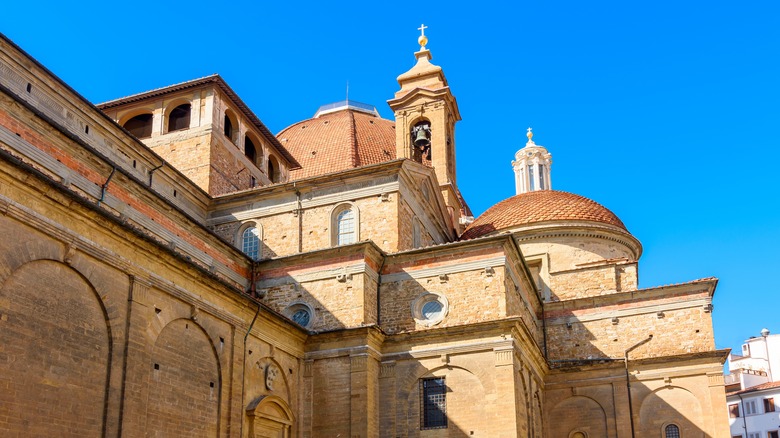
Mistervlad/Shutterstock
Its facades are less ostentatious than most of Florence’s other famous churches, but don’t let that fool you. San Lorenzo Basilica is actually made up of several structures, and as befits anything sponsored by the Medici, the structures are full of architectural and artistic masterpieces. In the 15th century, the Medici called on several superstars to contribute architectural and decorative elements to a newly rebuilt church, crypt, and library. Brunelleschi (the architect of the Duomo’s dome) designed the basilica’s interior. Instead of following Gothic-inspired tradition, he called on Classical and geometric elements. The sober style of balance and harmony had an immense influence on Renaissance art and architecture to come.
Donatello added decorative elements throughout the complex, and a century or so later, Michelangelo contributed. In addition to designing the Laurentian Library, whose staircase is known for seeming to flow like water, Michelangelo also designed the New Sacristy (part of the Medici Chapel) and sculpted “The Medici Madonna,” as well as two of the Medici tombs here. The tombs’ statues (“Night,” “Day,” “Dusk,” and “Dawn”) are some of his most famous works. These are just a few of the highlights you’ll see inside the Basilica di San Lorenzo and its complex. But you can’t access all of its buildings with the same ticket. Tickets are sold separately for the Medici Chapel and the Laurentian Library, which is an impressive historical library, reading room, and monument.
Shops and markets
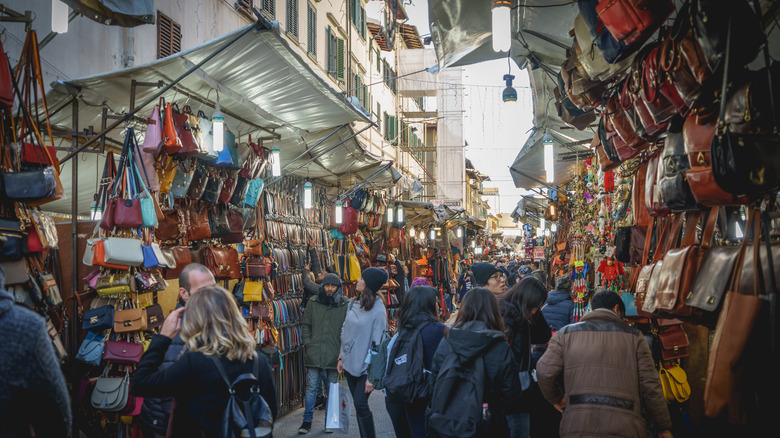
Paolo Paradiso/Getty Images
Even if you aren’t big on shopping, Florence has so many unique markets and stores worth visiting. Definitely consider checking out an outdoor market. Open a majority of the week (check dates and times before you go), many offer opportunities to see or buy iconic products from Florence and Tuscany. The most notable of these are leather goods, which you’ll find in shops and at markets like the Mercato Nuovo and the much larger Mercato San Lorenzo.
Bargain hunters willing to venture outside the city center should visit the Mercato delle Cascine for cheap clothes and everyday items. If you’re an antiquer, don’t miss the Mercato delle Pulci. As you stroll through the city, you’ll likely pass stationery shops. Going back centuries, marbled and gilded paper is another Florentine specialty. It’s hard to resist buying some for your desk at home. If local products don’t necessarily appeal to you, Florence also has its share of internationally known luxury shops, mostly located on the Via de’ Tornabuoni. Designer fans can get their fix at the likes of Versace, Cartier, Hermes, and Gucci (which was founded in Florence).
If you’re not interested in buying things, what about food? Florence’s food markets are a great place to taste fresh produce and local specialties. Or, you can just take in all the bustle, sights, and smells. A visit to the Mercato Centrale or the less touristy Mercato Sant’Ambrogio is a feast for the senses.
The streets of Florence
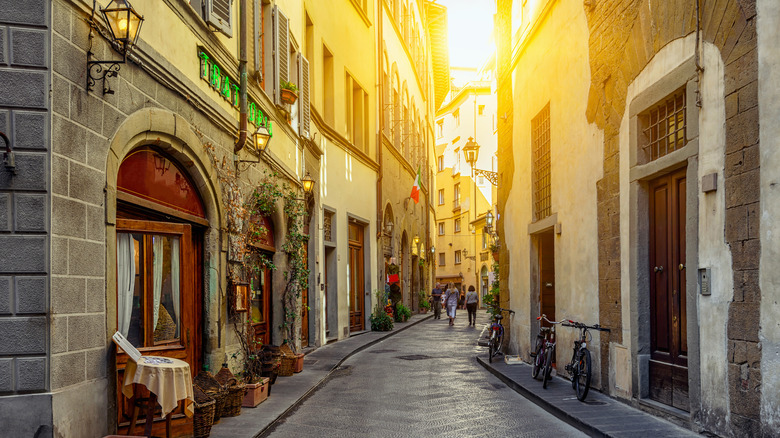
Catarina Belova/Shutterstock
Florence is relatively small and very walkable, but even if it wasn’t, it would be hard to resist strolling through the city. You’ll come upon everything from centuries-old architecture to charming little shops and tempting gelaterias. As in any city with a lot of history, you’re also sure to discover some peculiar things. Take, for instance, Florence’s iconic wine windows. These small wine windows, known as buchette del vino, were used by merchants to hand out wine during the plague of the 16th and 17th centuries to limit contact and contagion. Sound familiar? Understandably, wine windows went viral during the pandemic, but very few are still in use today.
So much of the charm of Florence is the city itself — a beautiful, fascinating blend of old and new enveloped in the centuries-old stones all around you. No matter what you’re here to see, Florence itself is the main attraction. You can take in its unique and unforgettable ambiance, countless stunning views, and artistic treasures (or replicas) that seem to be around every corner — for free. Florence is an amazing destination for travelers on any sort of budget, and its beauty, history, and surprises will surely enrich your soul.

